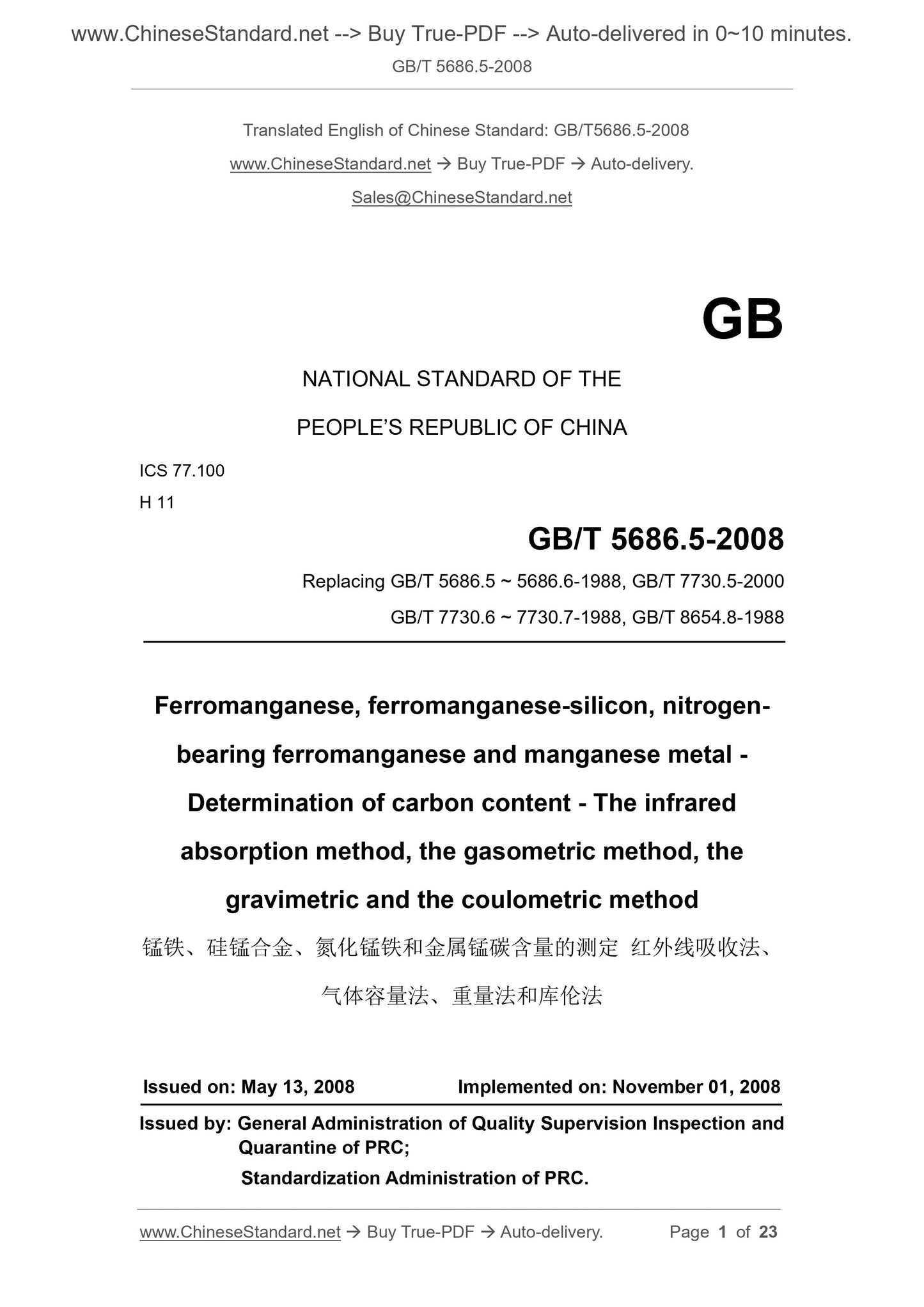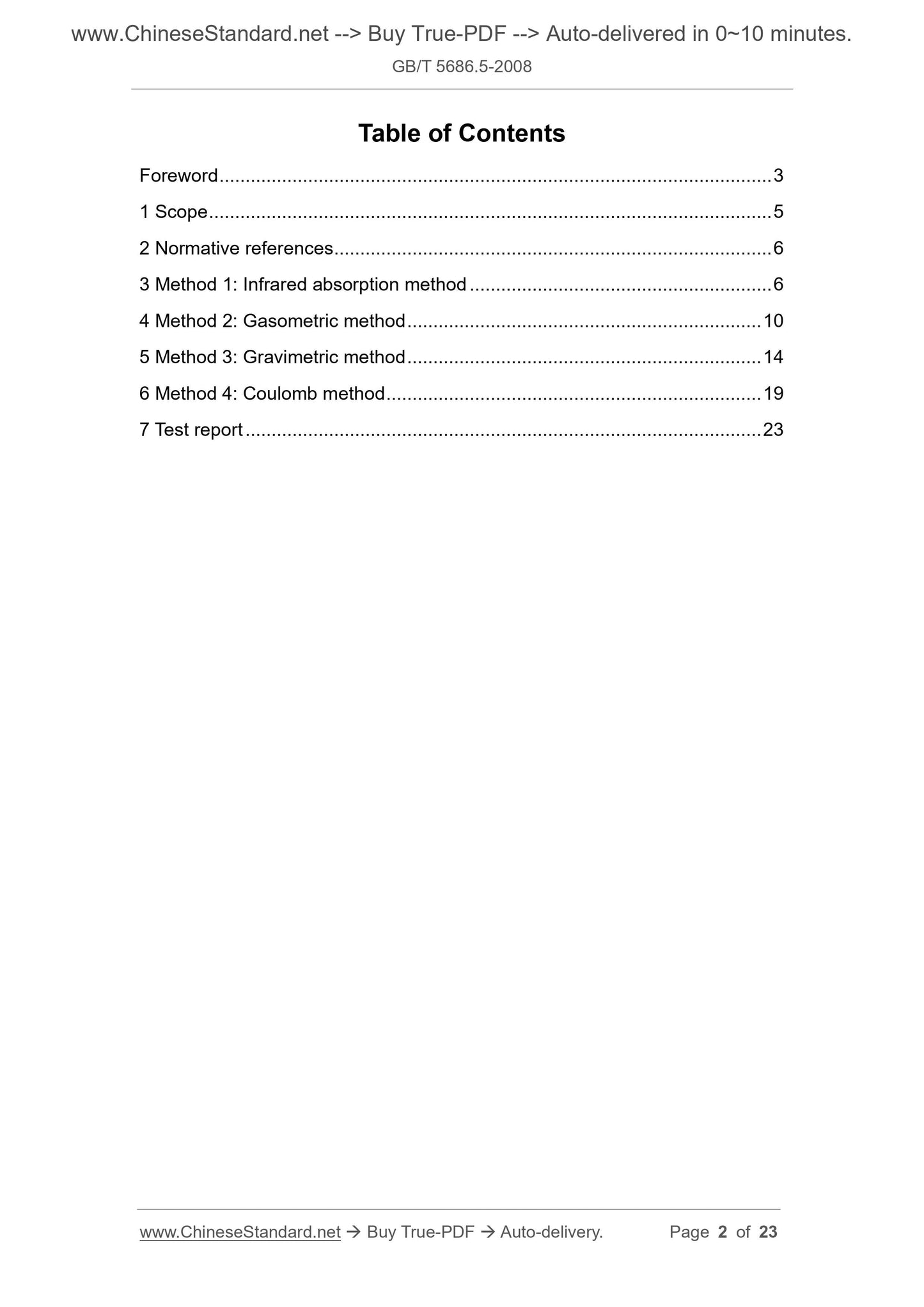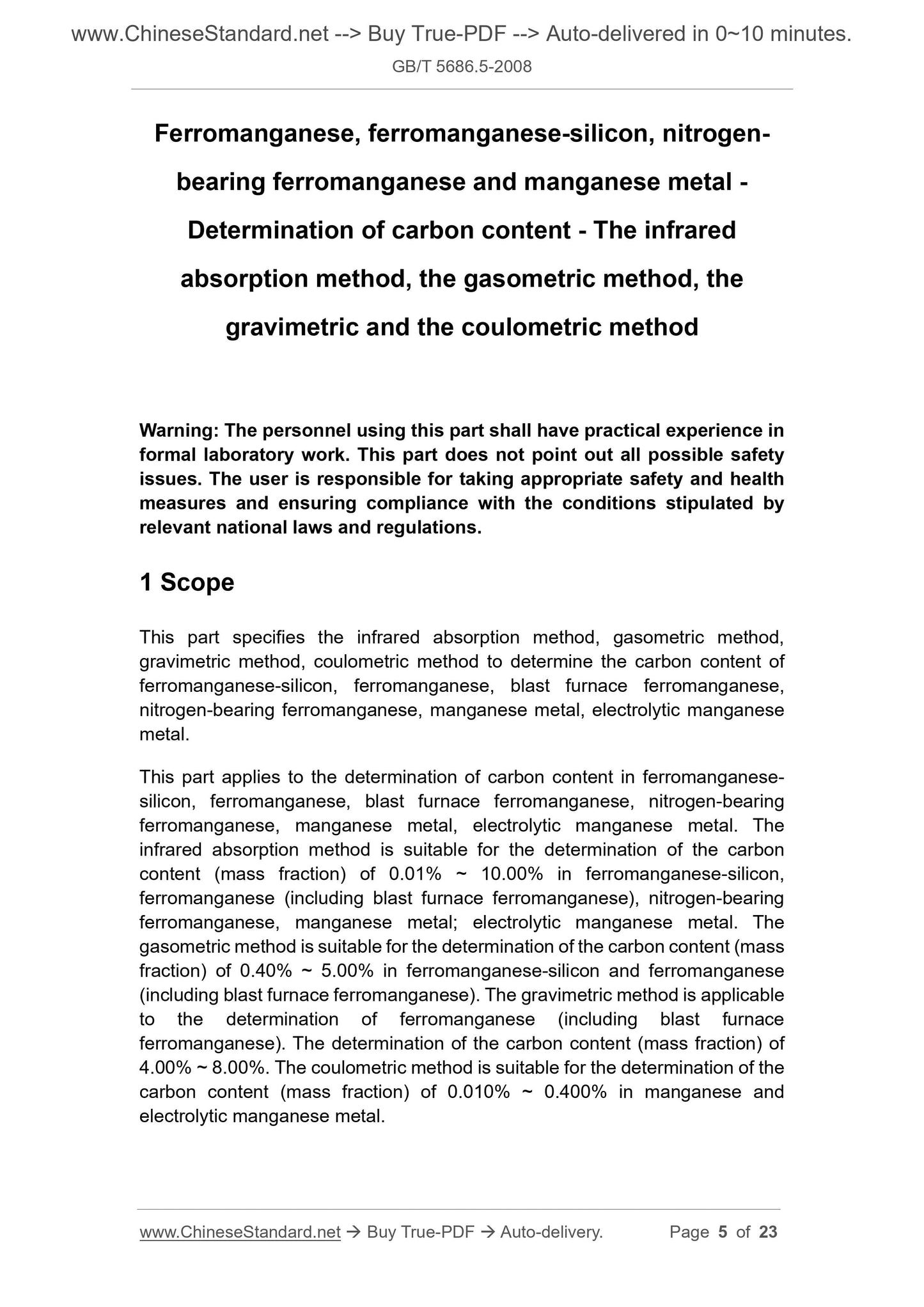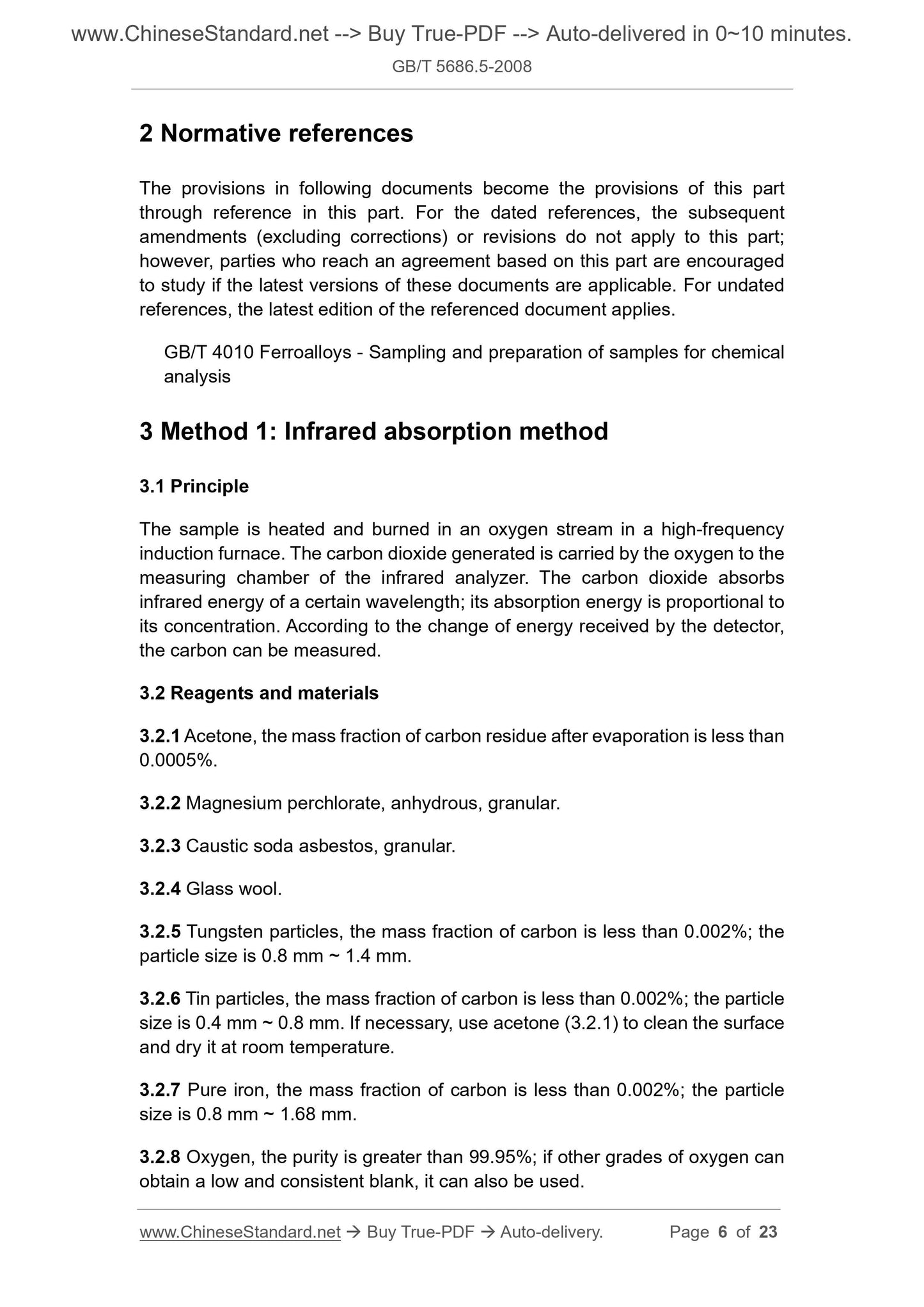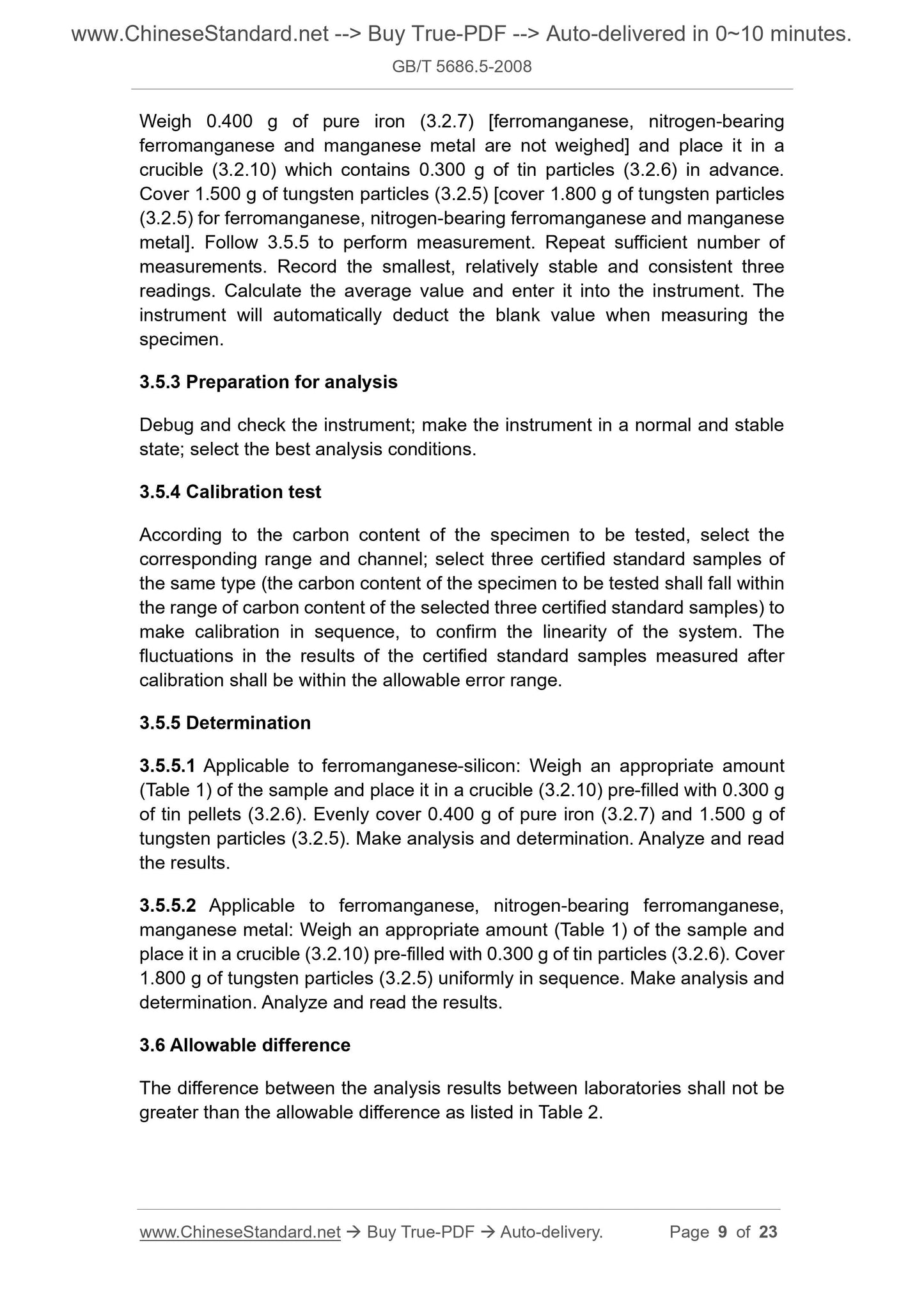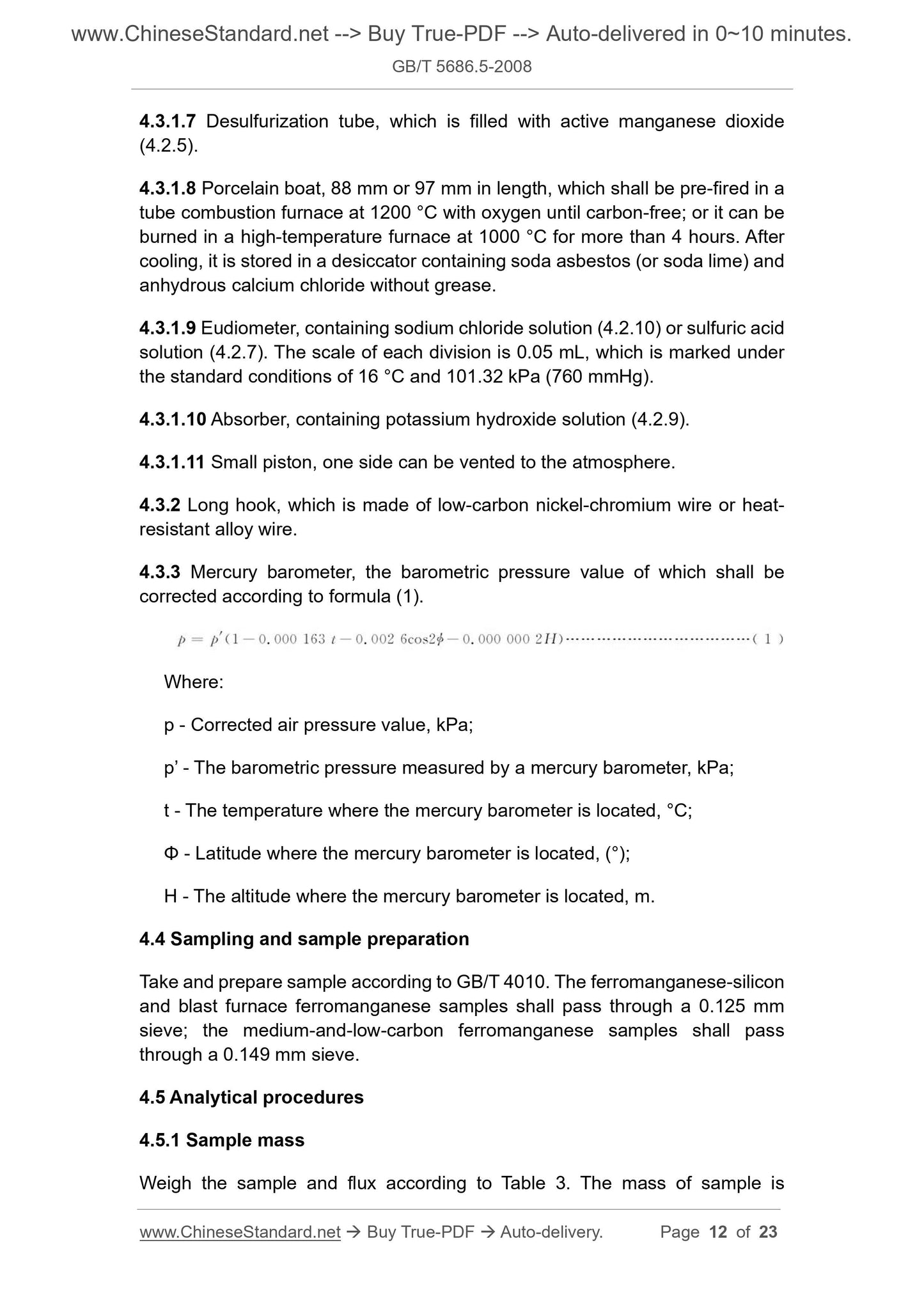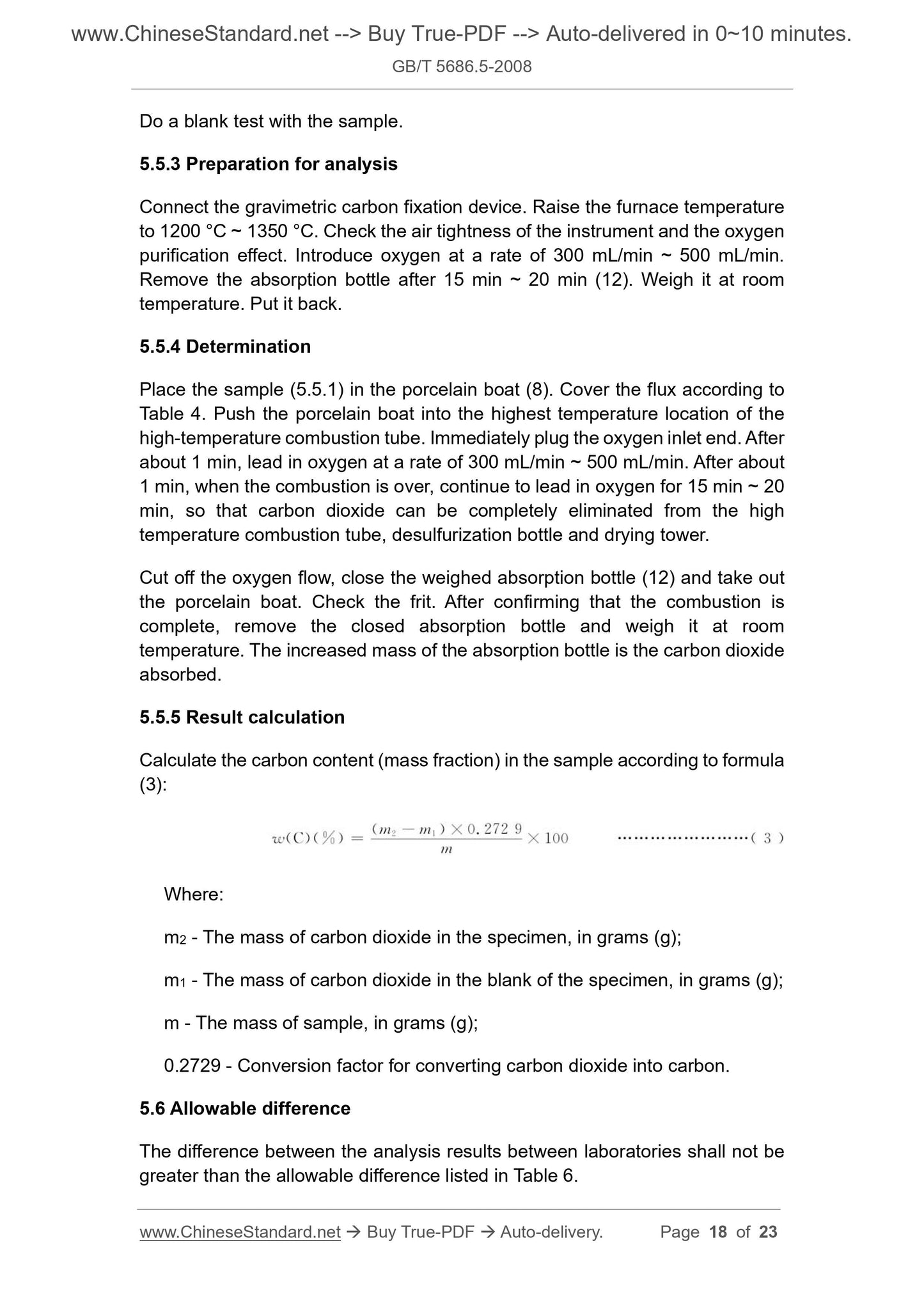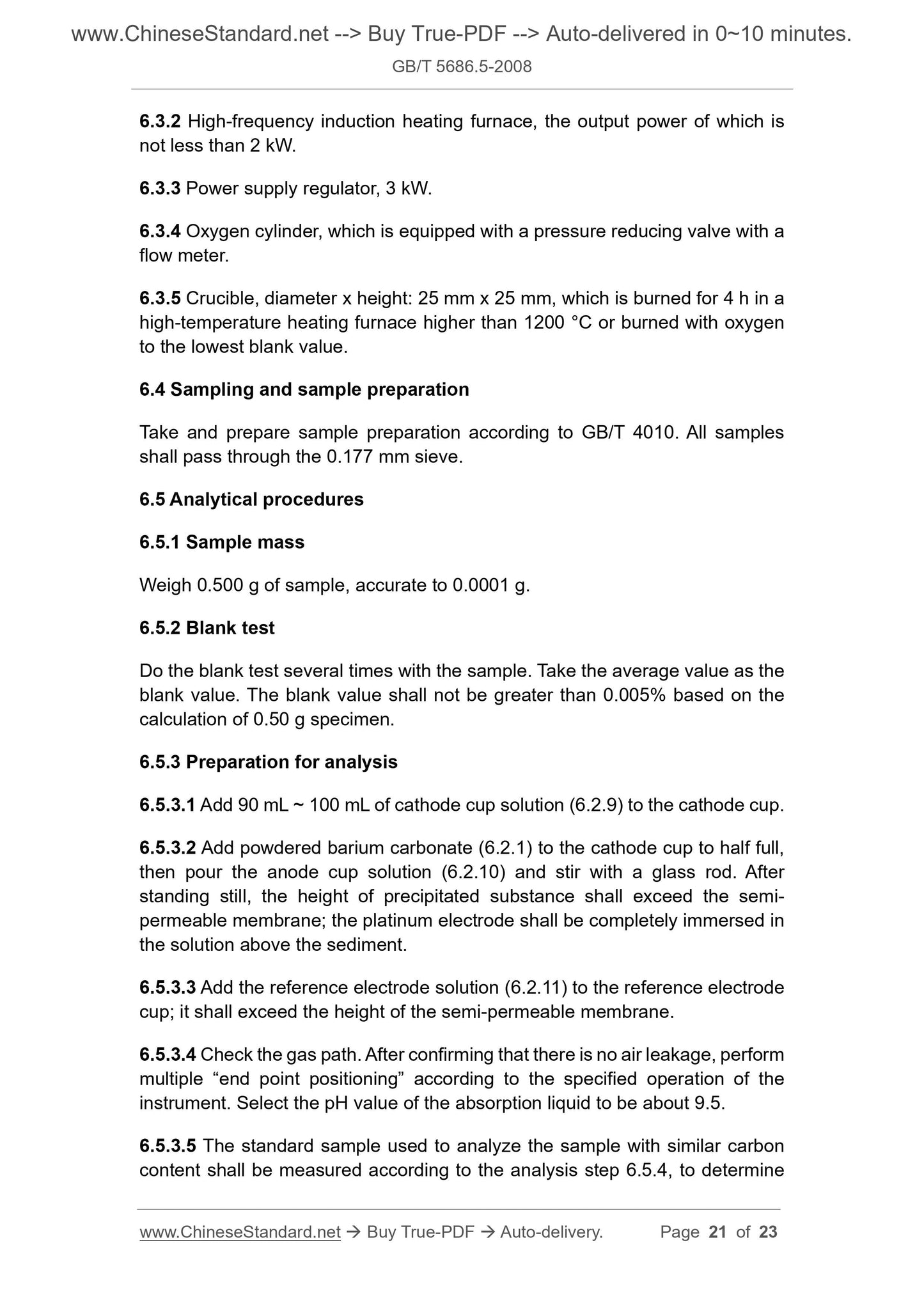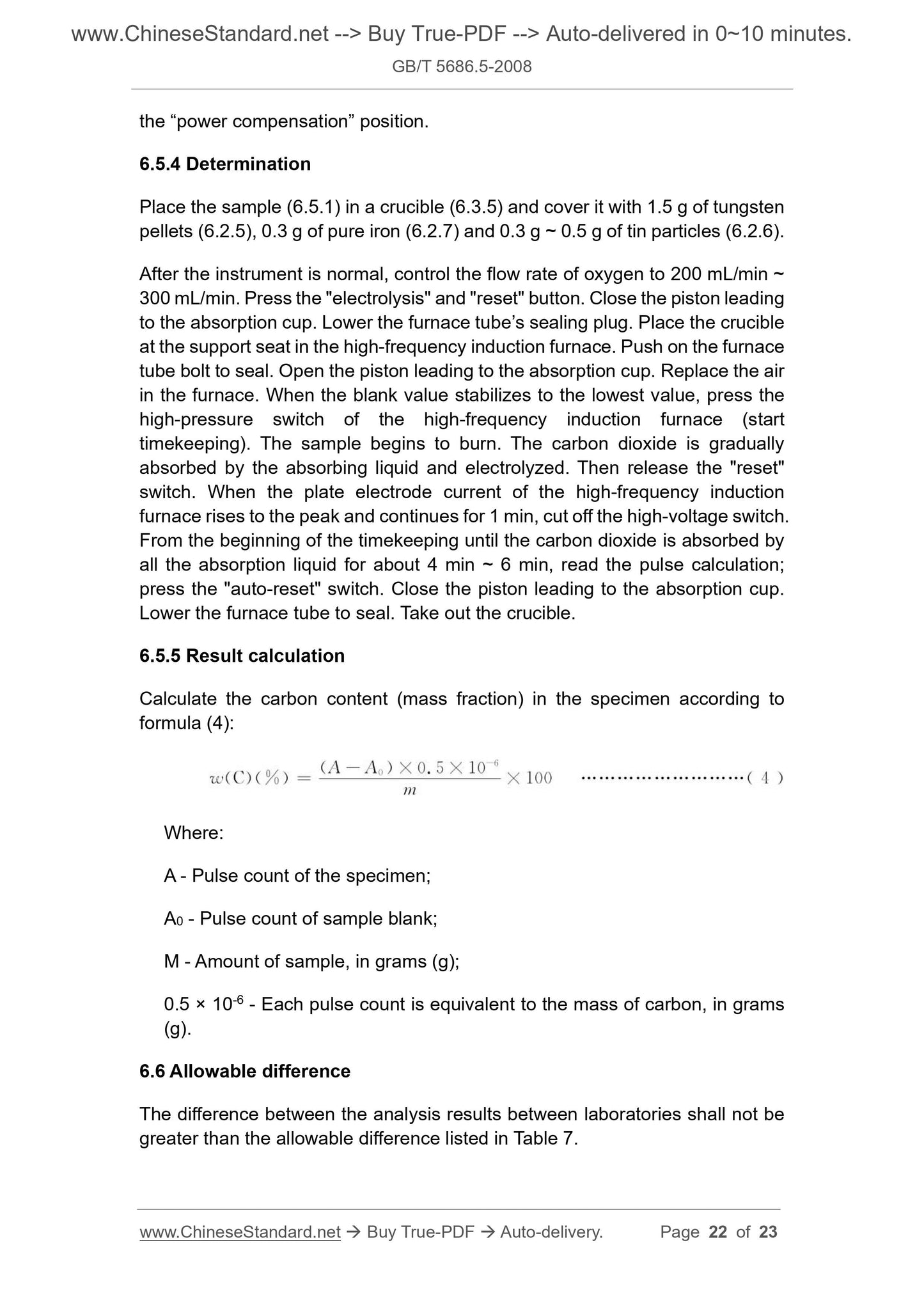1
/
of
9
PayPal, credit cards. Download editable-PDF & invoice in 1 second!
GB/T 5686.5-2008 English PDF (GB/T5686.5-2008)
GB/T 5686.5-2008 English PDF (GB/T5686.5-2008)
Regular price
$180.00
Regular price
Sale price
$180.00
Unit price
/
per
Shipping calculated at checkout.
Couldn't load pickup availability
GB/T 5686.5-2008: Ferromanganese, ferromanganese-silicon, nitrogen-bearing ferromanganese and manganese metal - Determination of carbon content - The infrared absorption method, the gasometric method, the gravimetric and the coulometric method
Delivery: 9 seconds. Download (and Email) true-PDF + Invoice.Get Quotation: Click GB/T 5686.5-2008 (Self-service in 1-minute)
Newer / historical versions: GB/T 5686.5-2008
Preview True-PDF
Scope
This part specifies the infrared absorption method, gasometric method,gravimetric method, coulometric method to determine the carbon content of
ferromanganese-silicon, ferromanganese, blast furnace ferromanganese,
nitrogen-bearing ferromanganese, manganese metal, electrolytic manganese
metal.
This part applies to the determination of carbon content in ferromanganese-
silicon, ferromanganese, blast furnace ferromanganese, nitrogen-bearing
ferromanganese, manganese metal, electrolytic manganese metal. The
infrared absorption method is suitable for the determination of the carbon
content (mass fraction) of 0.01% ~ 10.00% in ferromanganese-silicon,
ferromanganese (including blast furnace ferromanganese), nitrogen-bearing
ferromanganese, manganese metal; electrolytic manganese metal. The
gasometric method is suitable for the determination of the carbon content (mass
fraction) of 0.40% ~ 5.00% in ferromanganese-silicon and ferromanganese
(including blast furnace ferromanganese). The gravimetric method is applicable
to the determination of ferromanganese (including blast furnace
ferromanganese). The determination of the carbon content (mass fraction) of
4.00% ~ 8.00%. The coulometric method is suitable for the determination of the
carbon content (mass fraction) of 0.010% ~ 0.400% in manganese and
electrolytic manganese metal.
Basic Data
| Standard ID | GB/T 5686.5-2008 (GB/T5686.5-2008) |
| Description (Translated English) | Ferromanganese, ferromanganese-silicon, nitrogen-bearing ferromanganese and manganese metal - Determination of carbon content - The infrared absorption method, the gasometric method, the gravimetric and the coulometric method |
| Sector / Industry | National Standard (Recommended) |
| Classification of Chinese Standard | H11 |
| Classification of International Standard | 77.100 |
| Word Count Estimation | 15,145 |
| Date of Issue | 2008-05-13 |
| Date of Implementation | 2008-11-01 |
| Older Standard (superseded by this standard) | GB/T 5686.5-1988; GB/T 5686.6-1988; GB/T 7730.5-2000; GB/T 7730.6-1988; GB/T 7730.7-1988; GB/T 8654.8-1988 |
| Quoted Standard | GB/T 4010 |
| Regulation (derived from) | National Standard Approval Announcement 2008 No.8 (Total No.121) |
| Issuing agency(ies) | General Administration of Quality Supervision, Inspection and Quarantine of the People's Republic of China, Standardization Administration of the People's Republic of China |
| Summary | This standard specifies the infrared absorption method, gravimetric method and the Coulomb determination of manganese silicon alloy, , blast furnace ferromanganese, , nitride ferromanganese, carbon content of the metal manganese and ferromanganese EMM gas volumetric method. This section applies to manganese silicon alloy, ferromanganese, Manganese determination of the carbon content and the EMM, blast furnace ferromanganese, nitrided ferromanganese. The infrared absorption method which applies to manganese silicon alloy, ferromanganese (including blast furnace ferromanganese), nitride ferromanganese, determination of manganese metal and EMM 0. 01% to 10. 00% carbon content (mass fraction), gas volumetric method applicable manganese silicon alloy, determination ferromanganese (including blast furnace ferromanganese) of 0. 40% to 5. 00 % carbon content (mass fraction), gravimetric method applies to ferromanganese (including blast furnace ferromanganese) the carbon content of 4. 00%-8. 00% (mass fraction). |
Share
